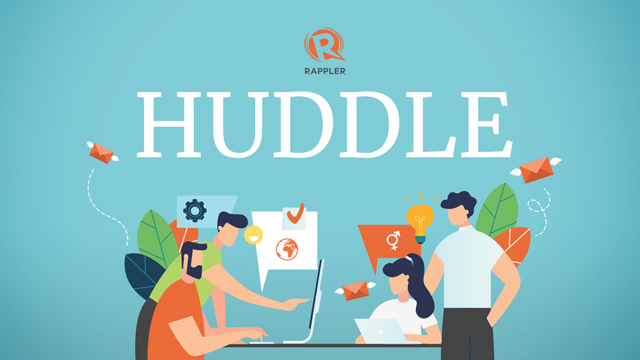
If you’re that one millennial among 3 who checks social media at least once every day, then you’ve probably come across those “listicles” about how journalists are as partners – you know, why you should date a journalist, or you know you’re married to a journalist if…
I’ve been ambivalent about those types of write-ups. Sure, among fellow journalists and their partners, anecdotes about our “strangeness” make for good appetizer or dessert in get-togethers. But sharing them with the public, most of whom probably see us as unfeeling deliverers of information (or supposed purveyors of “fake news” – i.e., truths they don’t want to hear)? I’m afraid I’d come out so self-absorbed, or my friends and I cliquish.
That reluctance could be an extension of that good old reminder from our professors in journ school and the editors who mentored us: third-person point of view, you shouldn’t be in the story, you are not the story.
I haven’t thrown out that tenet.
I still believe we can show in a documentary that a village is kilometers away, across a river and muddy roads, from the town center, without declaring, “I walked this many kilometers to get here – as you can see, I’m huffing and puffing and dehydrating from all that hike.”
Yet, I also now recognize the necessity of welcoming our audience a bit more into our lives via the newsroom.
Sure, we have volunteers we call Movers who send us updates from areas that our correspondents cannot reach. We crowdsource sentiments about the burning issues of the day. We do Twitter conversations on consumer issues. We run Facebook polls on a whole range of interests. We respond to sincere questions and well-thought-out comments on our posts.
These have not been enough to make a considerable segment of news consumers truly understand how journalism works.
Every day, several times, on multiple platforms, we see users loosely throwing around phrases such as “bayaran” (paid hacks), “bobo” (dumb), “biased” when they dislike or don’t agree with the way we’ve written a headline or angled a story.
Or when they simply do not understand why this report was used, why one quote was highlighted over another, why we treated a story in a certain way.
Or when they see us being swarmed with the "fake" news label when we report – along with other media outfits – the findings of state auditors that public officials misused taxpayers' money.
Suddenly, the free-for-all nature of social media and technology has made users aggressively – although not always credibly – challenge the trust we used to automatically command from our audience.
Suddenly too, the same platforms have afforded us to explain our work, our views to our public: we have Rappler’s channels; we have our journalists’ verified accounts. (You can get to know us too by clicking on our bylines from the story pages – they will lead to our individual profiles.)
Away from our smartphones and laptops, we organize or speak at campus meet-ups, community workshops, international forums. We are designing media literacy modules for high school and college students because they are the ones who are most vulnerable to lies, misinformation, and propaganda, yet are also most ready to be taught responsible news consumption and social media behavior.
The media is not the enemy.
There may be some bad eggs in the industry, but which industry or institution doesn’t have them? And you can be sure that in individual newsrooms and through media watchdogs, their shenanigans are addressed, and we strive to make them irrelevant.

What I can tell you, from my decades in journalism, is that most practitioners consider this a calling, a moral responsibility. You can trust us again that every crucial time – and every time, to us, is a crucial time (we are OA like that) – we do and will rise to the occasion.
As journalists, as your traditional gatekeepers, we vet sources and distill information, we sniff for motives and pry into agenda, we draw from institutional memory. We have inside stories.
But I’m certain, too, that you know things we don’t, you have views we’d be interested in taking, you have questions we ought to answer, not to mention juicy appetizers and delectable desserts!
So starting on July 25, and every Wednesday after that, I’m going to send out a newsletter to your emails to share the stories behind the latest issues flooding your social media feeds, or how we think stories will unfold beyond today’s take.
I promise it to be a conversation – say, a huddle – between you and me, just like how we process, discuss, debate, argue things in the newsroom.
What turns our morning coffee time from a leisurely sip into a hurried slurp? What triggers frenzied alerts on our chat channels on what began as a slow day?
What stirs the mom or big sister in an editor that she would impulsively treat the reporters to beer and barbecue after work hours because she felt they needed that on this particular night? What makes us stay so late in the newsroom that our dogs forget what we smell like? We’d like to share that with you.
What makes you check Rappler.com for breakfast (or in the middle of traffic)? What kinds of news and information excite or provoke you that you just have to take to Facebook or Twitter or Reddit or Instagram in the middle of your work just to make a point?
What concerns do you feel passionate about but which you feel is not getting the attention they deserve? Who are the people, the communities, you want us to know because they, too, have stories whose angles and headlines we should take up in the newsroom huddles? We’d like to know.
So, how about that kind of date with journalists – Rappler journalists – on Wednesdays? – Rappler.com
Subscribe to Huddle with Miriam Grace Go
Stories behind and beyond the news